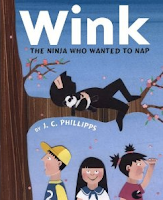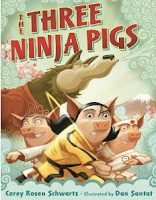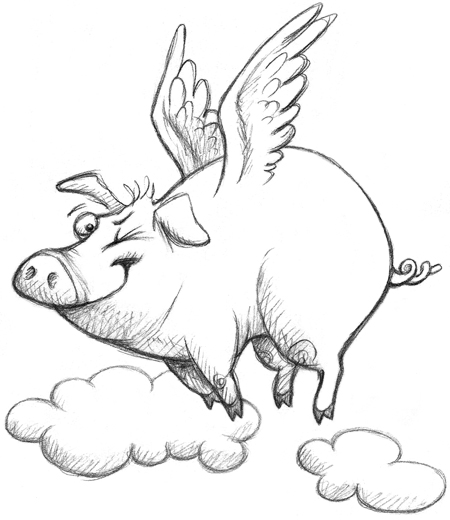Viewing: Blog Posts Tagged with: wink, Most Recent at Top [Help]
Results 1 - 4 of 4
Blog: Game On! Creating Character Conflict (Login to Add to MyJacketFlap)
JacketFlap tags: cry, blink, stare, bodylanguage, gaze, conflict, fiction, writing, character, communication, craft, behavior, eyes, face, look, wink, Add a tag
Blog: Picture Books & Pirouettes (Login to Add to MyJacketFlap)
JacketFlap tags: Corey Rosen Schwartz, Wink, Dan Santat, The Three Ninja Pigs, Ninja Picture Books, Ninja Game for Dancers, J.C. Phillipps, The Ninja Who Wanted to Be Noticed, The Ninja Who Wanted to Nap, Add a tag
Little did I know, the ninja game they played at camp was fabulous for teaching balance, isolating body parts, and practicing movements at different levels within a space. It also required the kids to take turns and encouraged them to focus. Boy did I take notice of that game!
Speaking of taking notice...before I tell you how to play the awesome ninja game, I'm going to tell you about a picture book that the game brought to mind. At a recent trip to the local public library, I discovered Wink: The Ninja Who Wanted to Be Noticed by J. C. Phillipps. It's the first ninja book I've ever read, and my kids and I both loved it!
Every day Wink has trouble being stealthy and silent like the other ninjas in the Summer Moon School for Young Ninjas. So every day his teacher, Master Zutsu, sends him home. Wink's grandmother tries several times to cheer him up, but it becomes clear that Wink doesn't really want cheering up. He wants to figure out, on his own, how he can get Master Zutsu to notice him. After all, he does want to be the greatest ninja in all the world!
I won't give away the end of the story, but it is a sweet one. I will tell you, though, that Wink eventually finds his way in the world, using many of the skills he learned from Master Zutzu but applying them in a way that suits him better. And he definitely ends up being noticed!
 The ninja game I'm about to tell you about would be a great activity to try after reading this book, or after reading the sequel Wink: The Ninja Who Wanted to Nap. Another ninja picture book -- The Three Ninja Pigs by Corey Rosen Schwartz and Dan Santat -- is also coming out this fall. It looks really fun, too! You can check out the book trailer here.
The ninja game I'm about to tell you about would be a great activity to try after reading this book, or after reading the sequel Wink: The Ninja Who Wanted to Nap. Another ninja picture book -- The Three Ninja Pigs by Corey Rosen Schwartz and Dan Santat -- is also coming out this fall. It looks really fun, too! You can check out the book trailer here. Ok...so now I'm really going to tell you about the awesome ninja game. I promise! I'm adapting it a little to make it easier to explain, and I encourage you to adapt it a little bit more if you need to. I'm going to explain how to play the game with a partner, but it could probably also be played with a very small group of children positioned in a circle. Enjoy!
Ok...so now I'm really going to tell you about the awesome ninja game. I promise! I'm adapting it a little to make it easier to explain, and I encourage you to adapt it a little bit more if you need to. I'm going to explain how to play the game with a partner, but it could probably also be played with a very small group of children positioned in a circle. Enjoy!- The object of the game is to use your ninja moves to come in contact with each of your partner's arms and legs (one at a time). It is a bit of a "contact" game, but children should be reminded that aggression is not part of the game. If a child does come in contact with his partner, it should not hurt.
- To start, each child strikes a "ninja" pose. Child 1, who is the first to go, should lunge at Child 2 into a new ninja pose, trying at the same time to come in contact with one of Child 2's arms or legs.
- Child 2 responds by moving into another ninja pose to try to avoid being touched. Both children should freeze in their new poses.
- If Child 1 is in contact with Child 2's arm or leg, then Child 2 cannot use that arm or leg for the rest of the game. If Child 2's arm is hit, he can put it behind his back for the rest of the game. If his leg is hit, he can lift that leg up and balance on the other leg for the rest of the game. Super hard, right? (Later in the game, if a child loses use of both legs, he will need to kneel for the remainder of the game and use only his upper body for the poses.)
- Child 1 and Child 2 take turns until one of the children loses use of all four limbs. The other child is the winner!
Blog: sketched out (Login to Add to MyJacketFlap)
JacketFlap tags: illustration, illustration friday, drawing, humor, sketch, children's illustration, sketchbook, sketching, flying pig, gesture, wink, Add a tag
Armed with only wings, hooves and oinking, Ignatz found articulating irony a bit difficult. Luckily, having mastered the art of winking, Iggy was able to use this gesture liberally while doling out the hogwash.
Wink wink, get it? Hogwash? Anybody?
…………………………………………………………………………………………………………………..
This week’s Illustration Friday theme is “gesture” and once again I am really reaching to fit something in. A very nice person, commissioned me to draw a flying pig for a piece she is working on. I figured I could also make it work for an IF post, since otherwise, I’ve been busy, feverishly working on stuff for the L.A. SCBWI conference in a few weeks.
Hey, is anyone else going? Let me know!
Blog: Christine Garner Illustration (Login to Add to MyJacketFlap)
JacketFlap tags: podcast and screencasts, audacity, screencasts, Wink, podcasts, Add a tag
I’ve been learning how to do screen-casts with a free programme called Wink 1 and learning how to do podcasting with Audacity 2 over the last few days.
I thought it might be handy for something, but at the moment I have podcast stage fright and nothing to talk about except tea and cakes. Mabye another time.
The only anoying thing about Wink so far is that it only creates swf files as it’s moving picture output. It does allow you to make pdf presentations as well.
I’ve been playing with Audacity too, a great free tool for recording audio from your microphone or computer. It also has a great noise removal feature, I used it on one of my tests near the humming of my computer and it cleared all the background noise away completely.
Anyway I just wanted to test if this works:
Heres a screencast I did of the Kali pattern generating programme.
Add a Comment





Oh my gosh, I think my kids learned this game at camp, but I thought they had just made it up!
Thanks for the THREE NINJA PIGS shout out!
Hi, Corey. So funny that your kids learned it, too. Maybe it's a new camp craze :) It was really hard to try to explain the game in writing, though. I hope it made sense!